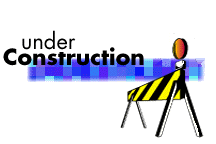
There are at least three ways to read the Bible, and all are necessary.
First, read it historically, or chronologically.
Second, read it as a "How-To" book, with practical commands for everyday life. (Law)
Third, read it theologically. Or in other words, systematically. This means we must "connect the dots." We have to let "Scripture interpret Scripture." That means we can't dream up our own meaning and impose it on the Bible, but must let the Bible impose its own meaning on the text. We might read something in the early chapters of the Bible that we don't understand clearly, and be tempted to impose our own interpretation onto the text. But later on in the Bible, the Bible might tell us how to interpret that earlier passage that we were having trouble understanding.
The Westminster Standards provide a theological grid through which we can see how to connect the dots. Sometimes the Westminster divines didn't get it right, but they provide a helpful general guide.
